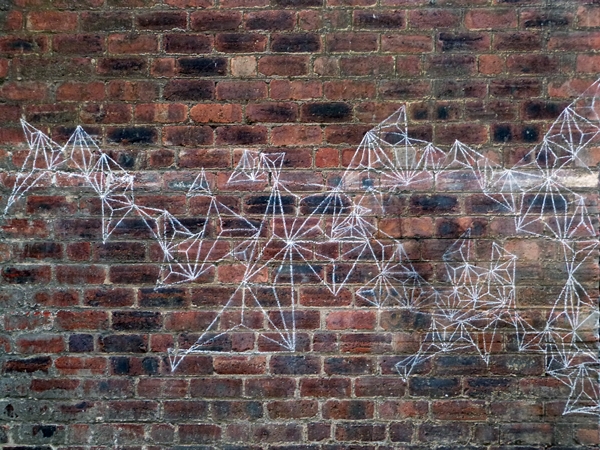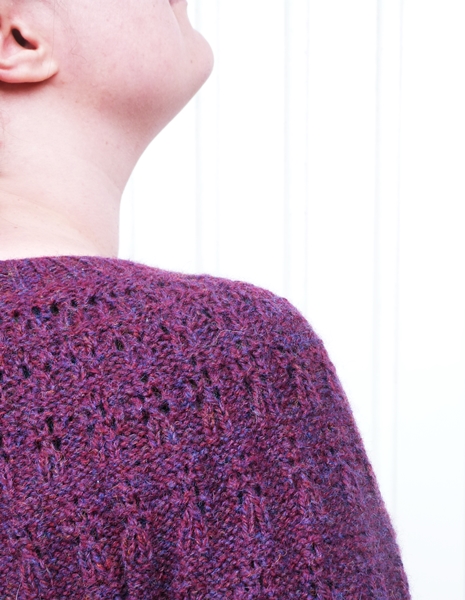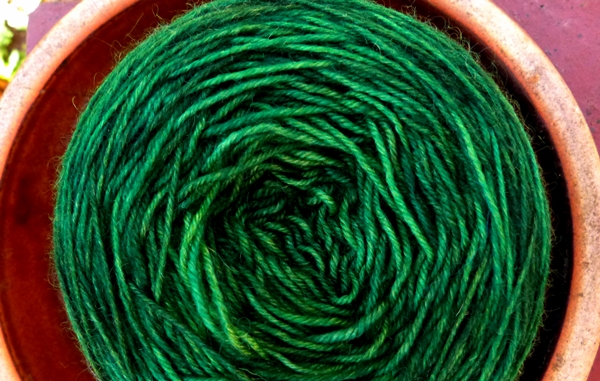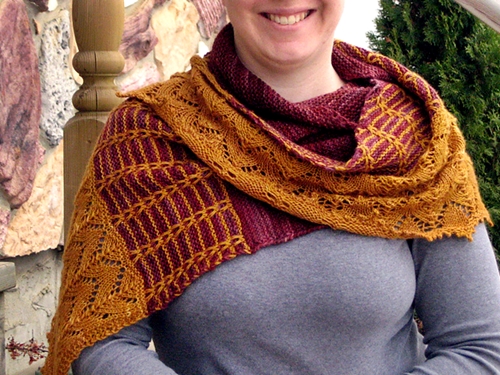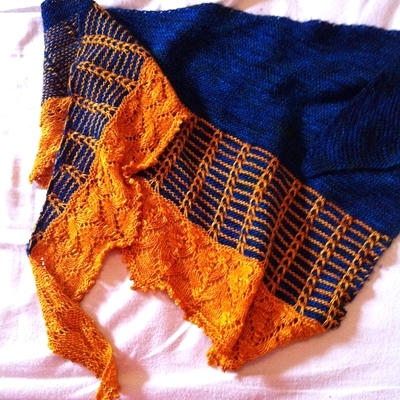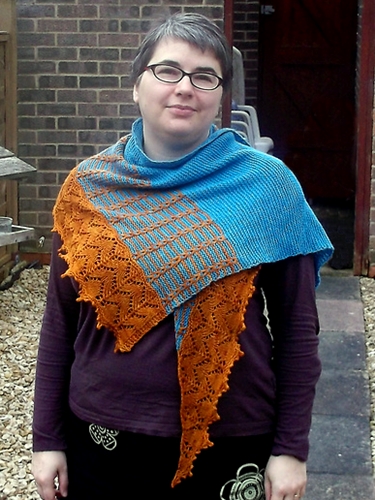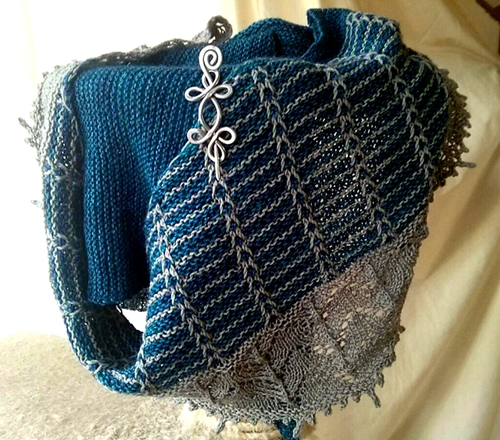I have had a couple of conversations lately about gauge and yarn subs, so I thought I'd write briefly about how to read ball band labels.
First, though, two things.
1) The Seaforth hat is now free to download from Ravelry. Go on! One skein of kettle-dyed loveliness will net you a fabulous hat for Spring (or Autumn if you're on the other side of the world to me). This one's on me.
2) I've updated the workshop page with the last few workshops of Spring 2015. I'm currently developing new classes, so this will be your last chance for some of these. I think that's a fair warning!
Now about those ball bands.

A snapshot of what's on my table this afternoon! I also liked the array of languages. from L to R: Danish sock yarn (or at least a Danish ball-band), British Black Yarns Classic DK, Faroese Sirri Art Yarn, and Malabrigo Rios from Uruguay. Knitting is a global language.
Firstly, you need to understand that the ball band gauge is more a guideline than anything.
Suggested gauge on the ball band works to categorise yarns: this is double-knitting, this is a worsted-weight yarn and so forth. It is helpful for yarn companies as it’s easier to sell a line of yarn if it falls into a category than if it’s an outlier (many LYSs have sections based on yarn weights: "this is the lace section and here are the 4ply/fingering-weight yarns"). This way of categorising yarns makes sense for LYSs - quite simply, categories helps if you stock more than 10 different yarns. Not only can LYS employees confidently recommend yarn substitutions ("Oh, this hat is knitted in Unicorn Yarn DK? We don't stock that yarn, but you could try this DK from Glitter Kitten Yarns") but it makes life easier for everybody to agree on what a DK is and how it's different from a lace-weight yarn.
So there is a definite interest in having standard weights with standard gauges.
However, one thing is what we can all agree upon and another thing is reality. I am not saying this happens but yarn companies may sometimes “force” a yarn into a category even it is actually just a smidgen too fine or heavy to fall into a category. When I worked with LYSs here in the UK, I recommended they always swatched their yarns to learn the handle of the yarn and also (coughs) if a yarn actually worked up nicely at a certain gauge. I am not naming actual examples but there is one UK DK yarn with a recommended gauge of 23-22 sts that I always felt belonged to the sport category with a gauge of 25-24sts.
So, you have a ball band gauge that is a ballpark figure and occasionally a marketing tool. Keep that in mind. The stated ballband gauge does not always spell the truth and should be considered a guideline more than anything else.
Secondly, in a pattern you should always pay attention to a designer’s gauge
Every designer has different gauge and the knitter should try to get gauge (esp. something like clothing, oh my). I often liken knitting to handwriting: we can all agree on what a handwritten R looks like, but it'll always look slightly different from person to person. Designers are individuals too and as such their knitting gauge is also slightly different from designer to designer.
My favourite example is a Rowan magazine. I knitted two fair isle cardigans out of Rowan Felted Tweed. One cardigan used 3.25mm to get a gauge of 25 sts over 4” - the other cardigan used 4mm to get a gauge of 25 sts over 4”. Same company, same magazine, same yarn, two different designers. The ball band says a third thing, by the way.
Sometimes a designer may also deliberately play around with a yarn to get a completely different fabric than a 'standard' stocking stitch (whatever the agreed standard is, of course!). These days I think the most common deviation from recommended gauge is 4ply/fingering weight which many people are now happy to knit on 4mm needles at a gauge miles away from 28-30 sts over 4". On the flipside of the coin I had a pattern where I used a yarn I’d normally knit at 16-15 sts over 4” where I took it down to something ridiculous like 28 sts - it was dense. I explained in the notes that I wanted a very firm fabric and people were generally really happy. For me, it was about communicating why I had chosen such a dense fabric and not followed the ball band gauge.

So, how to decode a ball band - in brief
Another yarn from the pile on the table is the Rowan Creative Focus Worsted. I thought it made a good little intro to ball bands (especially if you are not a confident knitter).
- product code: this one always baffles people. When you work with masses of yarn (say, as a buyer or as a LYS owner), you need product codes so you can keep track of stock, do orders, and track best-sellers. Most shade cards also have corresponding product codes.
- recommended gauge: CFW comes in at 20 sts and 24 rows over 4"/10 cm. That's pretty much standard for a worsted-weight yarn which is slightly heavier than a DK (which is 22 sts) and an Aran (which is typically 18 sts). Interestingly I get 21sts across 4" when I knit with CFW. One stitch out over 4" doesn't sound like much but it does actually matter when you are working with hundreds of stitches - then that one stitch can mean the difference between a well-fitting cardigan and a sad-looking thing at the back of the wardrobe.
- recommended needles: guideline, folks, guideline. If you are a loose knitter, you go down a needle size and if you are a tight knitter, you go up a needle size .. after you have looked at the designer's chosen needle size and swatched.
- product name: sometimes the actual name of the yarn gives you a clue as to the weight of the beastie. Creative Focus Worsted. Classic DK. Snowflake Chunky. Sometimes you have to look closer, though: Baby Cashmerino? Cocoon? Cascade 220?
If you are unsure about the various weights, the Craft Council of America has a great page about the North American system. The UK system is different (as is the Australian method, the Scandinavian system etc). The best person to ask about the yarn you are contemplating buying will always be your LYS employee (because they should know their stock better than anyone!) and I also recommend asking at your knitting group and, obviously, the designer!
Ah, my few words about ball bands turned out to be 1000+ words. So it goes.
Have a great weekend, folks!
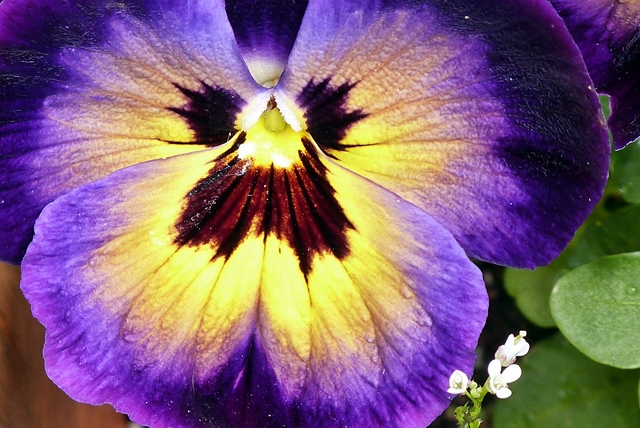 I'm supposed to be enjoying a long bank holiday weekend, so this blog post will be short and sweet. All photos by Mr D. who has lately begun taking more abstract photos and I'm enjoying looking at the world through his eyes.
I'm supposed to be enjoying a long bank holiday weekend, so this blog post will be short and sweet. All photos by Mr D. who has lately begun taking more abstract photos and I'm enjoying looking at the world through his eyes.
